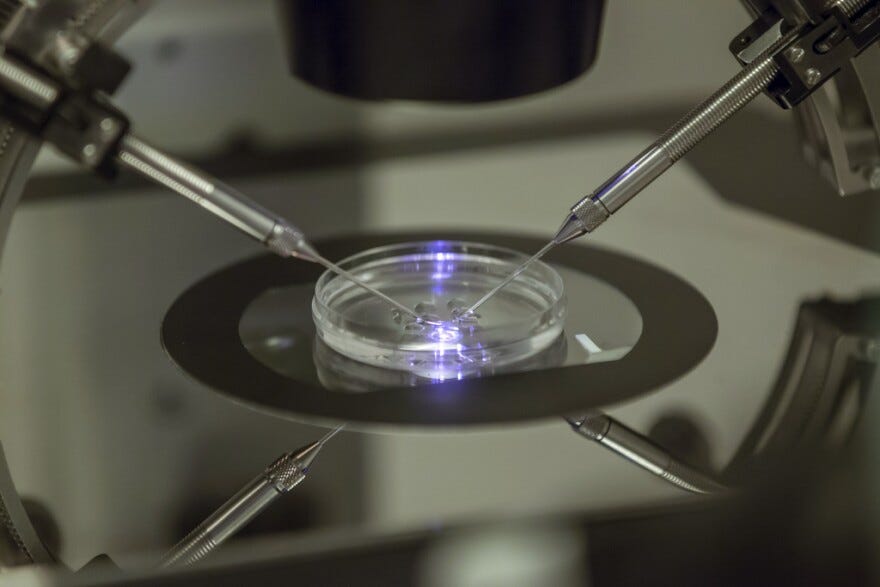UK's First Babies Born Using DNA from Three People
(image credit: https://wusfnews.wusf.usf.edu/science-space/2023-05-13/first-babies-britain-born-dna-3-people-regulators-say)
The United Kingdom has welcomed the birth of its first babies created using an experimental technique that combines DNA from three people.
The UK's fertility regulator, the Human Fertilization and Embryology Authority, confirmed that fewer than five babies have been born using this technique, but did not provide further details to protect the families' identities. In 2015, the UK became the first country to adopt legislation specifically regulating methods to help prevent women with faulty mitochondria from passing defects on to their babies.
Mitochondria are the energy source in a cell, and genetic defects in them can result in diseases such as muscular dystrophy, epilepsy, heart problems, and intellectual disabilities. Approximately one in 200 children in Britain is born with a mitochondrial disorder. To date, 32 patients have been authorized to receive such treatment.
So, how does this technique work? For a woman with faulty mitochondria, scientists take genetic material from her egg or embryo, which is then transferred into a donor egg or embryo that still has healthy mitochondria but had the rest of its key DNA removed. The fertilized embryo is then transferred into the mother's womb. The genetic material from the donated egg comprises less than 1% of the child created from this technique.
Many critics oppose the artificial reproduction techniques, arguing there are other ways for people to avoid passing on diseases to their children, such as egg donation or screening tests, and that the experimental methods have not yet been proven safe.
Others warn that tweaking the genetic code this way could be a slippery slope that eventually leads to designer babies for parents who not only want to avoid inherited diseases but to have taller, stronger, smarter, or better-looking children.
Robin Lovell-Badge, a stem cell expert at the Francis Crick Institute, a biomedical research center in London, said it would be critical to monitor the babies' future development.
"It will be interesting to know how well the (mitochondrial donation) technique worked at a practical level, whether the babies are free of mitochondrial disease and whether there is any risk of them developing problems later in life," he said in a statement.
Scientists in Europe published research earlier this year that showed in some cases, the small number of abnormal mitochondria that are inevitably carried over from the mother's egg to the donor's can reproduce when the baby is in the uterus, which could ultimately lead to a genetic disease.
Lovell-Badge said the reasons for such problems were not yet understood and that researchers would need to develop methods to reduce the risk.
Doctors in the US announced the birth of the world's first baby using the mitochondria donation technique in 2016, after the treatment was conducted in Mexico.
This breakthrough in genetic engineering could potentially be related to human cloning research, as it involves manipulating DNA to create a desired outcome and acceptance of atypical reproductive techniques like these may help pave the way for acceptance of reproductive cloning as well.




